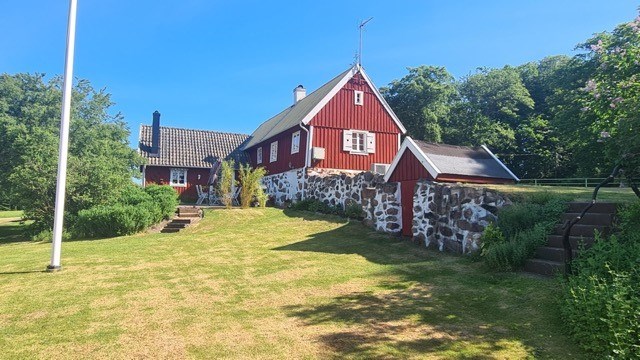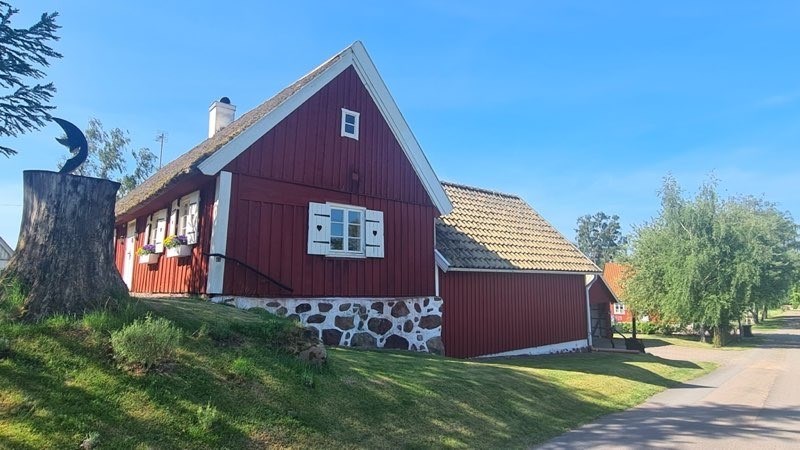Detta inlägg post publicerades ursprungligen på denna sida this site ;
Date:
Author: Rss error reading .
Original article: https://theconversation.com/boat-wakes-arent-just-a-nuisance-they-harm-freshwater-shorelines-and-wildlife-251958
After long winters, Canadians love their summers. For some, that means summer vacations by a lake, along a river or on a bay for some much-needed rest and relaxation. For some, it’s time to disconnect at the dock, while for others it’s a time to cruise the lake or enjoy the thrill of water-skiing, tubing and wake-boarding.
Over the last decade, there’s been a strong growth in the sale of new and pre-owned motorboats, and in particular, wake boats that are designed to generate large wakes.
While recreational boating is a multi-billion-dollar industry in Canada, and enjoyed by many — including me — there has been increasing concern among cottage owners and other advocacy groups about the impact of the wakes generated by these boats.
There is increasing evidence that boat wakes erode the shoreline, disrupt aquatic ecosystems, degrade water quality and pose a safety hazard to those at the shoreline or also on the water.
Stronger than waves
In Ontario’s cottage country, boat wakes represent a significant portion of total wave energy.
Except for lakes where motorboats are restricted, the energy generated by wakes is greater than the energy of the waves generated by winds. The exact amount depends on the size, shape and depth of the body of water, but recent research I conducted with colleagues suggests wakes can account for up to 90 per cent of the total wave energy in small lakes with widths up to five kilometres.
One respondent to our survey noted that:
“The shore is eroding. I’m losing land and trees into the water. The water is more murky than ever before and the constant large waves makes it unsafe for my kids to swim at times.”
Wakes not only represent an increase in the number of waves, but they are also responsible for waves of greater height and energy, particularly those generated by wake boats. The smaller the lake, the greater the wake energy at the shoreline, but it is also larger along rivers, lake arms and in bays due to the types and frequency of boating in those areas.
There is limited impact along rocky shorelines, our research has found, but change can occur where the shorelines are muddy or sandy and the water is shallow.
Just like large storm waves, wakes can erode the shoreline and uproot and undermine shoreline vegetation. The resuspension of bottom sediment and organic material can also degrade water quality and clarity, leading to the development of algae blooms and hypoxia and the dispersion of contaminants.
“We have boats that are enhanced for sale surfing and our lake is not wide enough or deep enough to handle the energy generated by the wakes that are produced by these boats. We have parts of our lake that are less than 20 metres wide and less than eigth feet deep, and these boats are generating cut-outs on the bottom of the lake bed, which of course stirs up silt from the floor bed and harms water clarity.” A cottager on Fairy Lake, north of Toronto.
Dangers to loons, fish, docks and people
The turbulence can also disturb loon nests and fish spawning in shallow water by destroying nests, washing away eggs and displacing juvenile fish, leading to reduced reproductive success.
“It is not a coincidence we have not had loons nesting on our point for 10 years since our channel became a busy wake-surfing mecca.” A cottager on Lake Joseph, north of Toronto.
In our research, residents and cottage owners also raised concerns that wakes cause damage to shoreline infrastructure and docked vessels, leading to greater maintenance and repair costs. Large wakes can make it difficult for smaller slower boats to navigate safely, and at the shoreline, those waves pose a hazard to swimmers, who may be knocked off balance or even swept out by larger waves.
While studies suggest that wakes represent a significant portion of the wave energy on small lakes, there has been little actual documentation of impacts, and we discovered that there was little direct evidence of erosion. Most examples were extreme and highlighted potential hotspots of shoreline change associated with boat wakes.
“Our shoreline has eroded approximately six feet in the last 10 years, causing trees and shoreline to collapse into the lake.” A Lake Joseph cottager.
Most respondents to the survey identified boat operation, the experience of the operators and use of the lake by other users (for example, those fishing, swimming and relaxing) as the primary issues associated with wakes and boating in general. This is consistent with another recent study that found no evidence of shoreline erosion, but an increase in sediment resuspension and phosphorus availability.
Speed limits, no-wake zones
Further study is needed to determine when and where boat wakes are a physical and/or ecological stressor rather than simply being a disturbance to the peaceful cottage country scene.
Through these studies, it will be possible to implement appropriate speed limits and no-wake zones, limits to wakeboat use and improve education and awareness as the industry continues to improve hull designs to reduce the wake.
There is no doubt that the debate over the impact of boat wakes will continue this summer, but hopefully it won’t make our time on the dock this summer too rocky.
![]()
Chris Houser does not work for, consult, own shares in or receive funding from any company or organisation that would benefit from this article, and has disclosed no relevant affiliations beyond their academic appointment.

